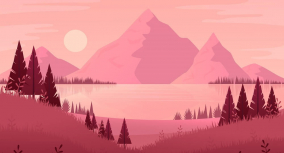This article by Custom-Writing.org experts explains the symbols in The Great Gatsby. In the first section, you’ll find the information on the color symbolism of The Great Gatsby: the green light, as well as the meanings of yellow and white colors in the novel will be explained. Then follows the information on the story’s setting symbolism.

🌈 Color Symbolism in The Great Gatsby
There are five principal color symbols in the novel. Green associates with Gatsby’s dream and persistence. White is mentioned in Daisy’s description. Yellow (golden) is about money and the decay of the material world. Blue is for the tranquility and loneliness of Gatsby. Gray is the background color, symbolizing disappointment, despair, and even death.
The Green Light in The Great Gatsby
In The Great Gatsby, the green light is the least mentioned color, though it is the most essential one. It symbolizes hope, dream, and inner youth. That’s why it is associated with Jay Gatsby.
During the first meeting with the narrator in Chapter 1, Gatsby stretches his hands toward the green light. The next moment, he disappeared. His vanishing in the darkness has a hidden meaning: a life deprived of hope is senseless and dark. When Gatsby achieved his dream (or understood its infeasibility), life lost its purpose.
…he gave a sudden intimation that he was content to be alone—he stretched out his arms toward the dark water in a curious way, and far as I was from him I could have sworn he was trembling. Involuntarily I glanced seaward—and distinguished nothing except a single green light, minute and far away, that might have been the end of a dock.
The Great Gatsby, Nick Carraway, Chapter 1
For the second time, the narrator mentions the green light in Chapter 5, when Gatsby has shown Daisy his wealth and almost fulfilled his dream.
The third and the last time, the green light is seen at the end of the story after Gatsby’s death. Jay was the only person to see the deep significance in the green light, and his dreams and aspirations passed away with him, just as the green light disappeared.
Gatsby believed in the green light, the orgastic future that year by year recedes before us. It eluded us then, but that’s no matter—tomorrow we will run faster, stretch out our arms farther…. And one fine morning—— So we beat on, boats against the current, borne back ceaselessly into the past.
The Great Gatsby, Nick Carraway, Chapter 9
Yellow in The Great Gatsby
The yellow color symbolizes the image that Gatsby strives to create. Yellow is the color of gold, which stands for material values, money, and high social status. To impress his beloved, Gatsby opted for the yellow color in everything: his mansion, his car, and even his tie are yellow. The food and the musicians at Jay’s parties shine with gold.
The lights grow brighter as the earth lurches away from the sun and now the orchestra is playing yellow cocktail music and the opera of voices pitches a key higher. Laughter is easier, minute by minute, spilled with prodigality, tipped out at a cheerful word.
The Great Gatsby, Nick Carraway, Chapter 3
White in The Great Gatsby
White stands for immaculate and pure beauty, nobility, and tenderness. In the novel, it is Daisy’s color. Her house is white, her dress and car are white. This color symbolizes everything Gatsby loved about Daisy. But it also has a reverse side. The color white also represents Daisy’s emptiness, shallowness, cruelty, and egoism.
🗺️ The Great Gatsby: Setting
The events take place during the Jazz Age and the Prohibition era in the US in the 1920s. The setting of the novel is on Long Island, the southeast part of New York State. There are three key locations: West Egg and East Egg villages, the Valley of Ashes, and the city.
What Do West and East Egg Symbolize?
These two villages symbolize Old Money and New Money classes. They are opposed to each other, highlighting the differences in the sources of wealth. East Egg represents inherited money, while West Egg stands for newly built capitals.
West Egg in The Great Gatsby
The inhabitants of West Egg rapidly gained wealth after WWI. They are self-made people whose fortune is often illegal and made by bootlegging.
Gatsby’s mansion is enormous and tasteless. It is too grandiose to be a house for living. It is a copy of Hôtel de Ville in Paris, just like Gatsby is an imitation of the wealthy class.
Nick’s house is “squeezed between two huge places,” indicating his moral conflict between society’s two layers. Moreover, he is a relative of the Buchanans, but he feels more related to Gatsby. This controversy is pressing on him.
East Egg in The Great Gatsby
East Egg is a place for wealthy people with heritage. Its “white palaces” are not just fashionable: they are truly beautiful.
The Buchanans are the American version of the aristocracy. And even though they have no titles, people without proper ancestry are separated from them with an “indiscernible barbed wire.” Having contacts with people who live in the Old Money peninsula is deemed to be prestigious.
In America, Old Money representatives tend to live in the Eastern States. Probably, the choice of the names on the literary map was dictated by this fact.
West & East Egg Quotes
Twenty miles from the city a pair of enormous eggs, identical in contour and separated only by a courtesy bay, jut out into the most domesticated body of salt water in the Western Hemisphere, the great wet barnyard of Long Island Sound… To the wingless a more arresting phenomenon is their dissimilarity in every particular except shape and size.
The Great Gatsby, Nick Carraway, Chapter 1
There were the same people, or at least the same sort of people, the same profusion of champagne, the same many-colored, many-keyed commotion, but I felt an unpleasantness in the air, a pervading harshness that hadn’t been there before. Or perhaps I had merely grown used to it, grown to accept West Egg as a world complete in itself, with its own standards and its own great figures, second to nothing because it had no consciousness of being so, and now I was looking at it again, through Daisy’s eyes.
The Great Gatsby, Nick Carraway, Chapter 6
She was appalled by West Egg, this unprecedented ‘place’ that Broadway had begotten upon a Long Island fishing village—appalled by its raw vigor that chafed under the old euphemisms and by the too obtrusive fate that herded its inhabitants along a short cut from nothing to nothing. She saw something awful in the very simplicity she failed to understand.
The Great Gatsby, Nick Carraway, Chapter 6
Valley of Ashes
The Valley of Ashes is a dumpsite separating New York from the rich peninsulas, East and West Egg. Trash is burnt there; that’s why the narrator refers to ashes when talking about this place.
People of the most impoverished class live there. Their life is hard and gloomy. George Wilson, the owner of a garage for automobiles, resides here with his wife, Myrtle.
This area symbolizes decadence, monotony, and disillusionment. It represents moral decay, emptiness, and death. The Valley of Ashes is the mirror of the 1920s, where everything is colored grey. The scene is bordering with the residences of the rich and famous.
TJ Eckleburg
A giant billboard with the face of Doctor TJ Eckleburg is towering over the Valley of Ashes. The focus is on his fading eyes in spectacles. These eyes are watching the dismal grey scene of poverty and decay. Ironically, the billboard symbolism is about the eyes of God staring at the Americans and judging them, although there is no explicit indication of this statement in the novel. Only Mr. Wilson looked at Dr. Eckleburg when mentioning God.
These eyes are literally unblinking (it is a poster,) referring to an unchangeable and eternal power of the world that is indifferent to people’s problems.
Valley of Ashes Quotes
This is a valley of ashes—a fantastic farm where ashes grow like wheat into ridges and hills and grotesque gardens where ashes take the forms of houses and chimneys and rising smoke and finally, with a transcendent effort, of men who move dimly and already crumbling through the powdery air.
The Great Gatsby, Nick Carraway, Chapter 2
But above the grey land and the spasms of bleak dust which drift endlessly over it, you perceive, after a moment, the eyes of Doctor T. J. Eckleburg. The eyes of Doctor T. J. Eckleburg are blue and gigantic—their retinas are one yard high. They look out of no face but, instead, from a pair of enormous yellow spectacles which pass over a nonexistent nose.
The Great Gatsby, Nick Carraway, Chapter 2
We hope that the above information is useful. If you want to learn more on the novel’s meaning, check out the Themes section. If you’re looking for great essay ideas on The Great Gatsby, feel free to read our list of topics.
🔗 References
- Most Important Symbols in The Great Gatsby, Analyzed
- The Great Gatsby I Summary, Context, Reception, & Analysis
- 8 Ways ‘The Great Gatsby’ Captures the Roaring Twenties
- Color Symbolism in The Great Gatsby – Video & Lesson
- The Great Gatsby Research Papers – Academia.edu
- The Enduring Power of Gatsby | Princeton Alumni Weekly
- F. Scott Fitzgerald and The Great Gatsby – Library News











